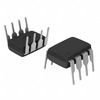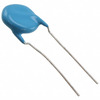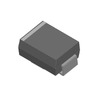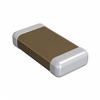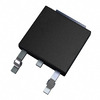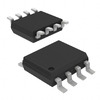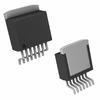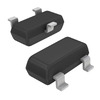Exploring Double Balanced Mixers: Circuitry, Theory, and Practical Operation
Double-balanced mixers excel in the field of frequency conversion and are known for their ability to suppress unwanted signals and enhance signal integrity. This type of mixer, employing diodes or transistors and transformers, ensures high fidelity in signal processing by minimizing interference between the local oscillator (LO) and RF signals, thus optimizing output signal quality.The architectural balance of double-balanced mixers not only improves signal quality but also widens the dynamic range of the systems they integrate with. This article offers a detailed exploration of their design and operation, focusing on different mixer types—from traditional diode-ring to advanced FET-based models—and the specific components that influence their performance. By considering these nuances, we appreciate their dynamic role and the technological innovations that boost their effectiveness in various RF applications.
Catalog

Figure 1: Balance Mixers
Exploring the Necessity of Balanced Mixers
In radio frequency (RF) engineering, maintaining signal clarity and minimizing interference are major priorities. Traditional mixers, known as unbalanced mixers, often allow significant amounts of both the local oscillator (LO) and RF signals to leak through, leading to unwanted interference. To manage this, engineers frequently have to add extra filters, which can be bulky and inefficient. Balanced mixers, by contrast, are specifically designed to overcome these issues. They naturally reject unwanted signals, improving overall system performance without the need for excessive filtering.
Balanced mixers come in two main types: single-balanced and double balanced mixers. A single balanced mixer suppresses either the LO or RF signal, but it cannot block both at the same time. In contrast, a double-balanced mixer, which is more widely used in advanced RF systems, suppresses both the LO and RF signals simultaneously. This results in a much cleaner output, with less noise and fewer unwanted signals.
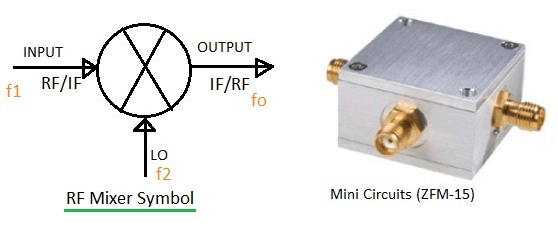
Figure 2: RF/Frequency Mixer Ports and Connections
Anatomy of RF/Frequency Mixers
Double-balanced mixers, a serious component in RF signal processing, have three main ports: the RF input, LO input, and IF output. These ports work together to enable frequency conversion, an ultimate step in RF applications.
The RF input port receives the incoming signal that needs to be converted. The LO (Local Oscillator) input takes in the frequency from the local oscillator, which directly affects the frequency and phase of the RF signal during conversion. Lastly, the IF (Intermediate Frequency) output provides the converted signal, ideally containing only the desired sum and difference frequencies of the RF and LO signals.
Different Types of Balanced Mixers
Double-balanced mixers come in several configurations, each designed to meet specific performance requirements by utilizing different electronic components. The most common types are hybrid-based diode mixers, hybrid-based active mixers, and purely active mixers.

Figure 3: Hybrid-based Diode Mixers
Hybrid-based diode mixers use a combination of Schottky diodes and baluns. This setup is widely used because of its dependability, providing consistent performance for most RF applications. However, the frequency response of these mixers can be limited by the baluns, which can impact the overall efficiency in certain higher-frequency scenarios.
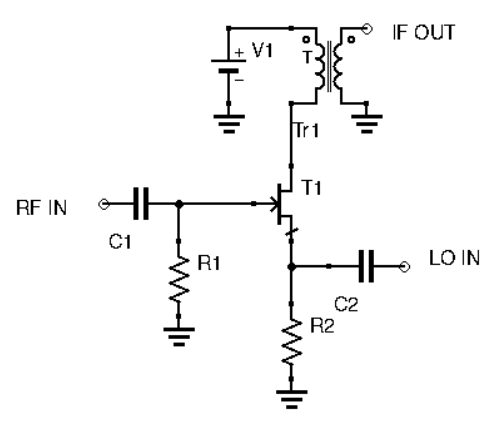
Figure 4: Hybrid-based Active Mixers
Hybrid-based active mixers replace the diodes with active components like Field-Effect Transistors (FETs). While retaining the balun structure, this modification improves the switching speed and allows the mixer to handle higher power more effectively. This makes hybrid-based active mixers a better fit for applications requiring faster signal processing or greater power capacity.
Purely active mixers represent a more modern approach, built entirely on semiconductor substrates without using baluns. This design significantly reduces costs and boosts RF performance, making these mixers especially suitable for contemporary RF systems. They offer broader bandwidth and are more cost-effective to produce, which is why they are commonly found in modern surface mount technology (SMT) packages. For even more demanding environments, purely active mixers are integrated into monolithic microwave integrated circuits (MMICs), ensuring high-performance frequency conversion across a wide range of applications.
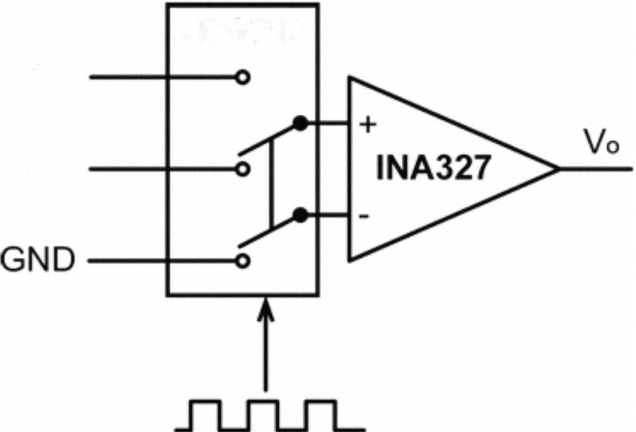
Figure 5: Reversing Switch Mixers
The Role of Reversing Switches in Mixer
Reversing switch mixers, a specialized type of double-balanced mixer, rely on a network of electronic switches arranged in a bridge configuration. These switches are synchronized by the local oscillator (LO) signal, which operates as a square wave, controlling the reversal of the RF signal. This switching mechanism sets reversing switch mixers apart from traditional analog mixers, making them highly effective in environments that demand a wide dynamic range and low noise, such as the sensitive front ends of radio receivers and spectrum analyzers.
The key to their operation is the precise control and timing of the LO signal, which ensures the accurate reversal of the RF signal. This accurate switching process is insistent on maintaining signal integrity and reducing unwanted noise. As a result, reversing switch mixers are particularly well-suited for handling complex, dynamic RF signals in high-performance systems, where maintaining clarity and minimizing interference are top priorities.
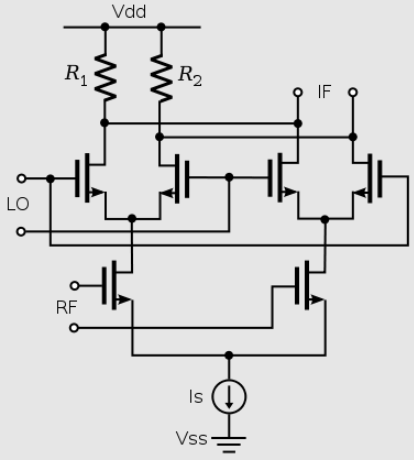
Figure 6: Double Balanced Mixer
Basics of Double-Balanced Mixers
A double balanced mixer relies on a straightforward yet highly effective design, consisting of a diode ring made up of four diodes and two transformers. These transformers are responsible for converting unbalanced signals into balanced outputs. While the concept is simple, achieving top performance requires precise construction and careful attention to detail, particularly to prevent any leakage of the LO or RF signals into the IF output.
One of the key design goals is ensuring high isolation between the RF and IF ports. This is accomplished through balanced diode switching, which prevents direct signal flow between these ports. This isolation maintains signal integrity, especially in RF systems, where interference can easily degrade performance.
Key Components of Double-Balanced Mixers
In double balanced mixers, the performance largely hinges on the specific diodes and transformers used. These components directly affect key factors like intermodulation distortion (IMD) and dynamic range. Schottky barrier diodes are commonly used due to their low on-resistance and excellent high-frequency performance. These qualities make them ideal for controlling the LO signal during switching, which helps reduce IMD and enhances overall signal clarity.
Transformers are equally significant, playing a key role in determining the mixer's bandwidth and overall efficiency. They need to be carefully designed to minimize losses in both the core and copper windings, which can otherwise reduce the mixer's performance. In addition, transformers are wanted for managing impedance mismatches, which, if not properly addressed, can degrade signal integrity. Engineers often fine-tune transformer characteristics based on the specific application, aiming to strike the right balance between performance, size, and cost constraints.
Optimizing the diodes and transformers is not just about picking the right components; it's about refining their design to suit the particular needs of the RF system. Careful selection and fine-tuning ensure the mixer operates at its full potential, maintaining high performance, minimal distortion, and reliable signal integrity.

Figure 7: Double Balanced FET Mixer
Deploying Double-Balanced Mixers in Complex RF Systems
Successfully integrating double-balanced mixers into RF systems requires careful attention to several practical factors. The first key consideration is selecting the right drive level for the diodes. This drive level must be accurately set to ensure efficient switching while avoiding overdriving, which can cause signal distortion and degrade performance.
Another grave factor is impedance matching across the RF, LO, and IF ports. Proper impedance matching is required to maximize dynamic range and minimize noise in the system. This often involves fine-tuning the mixer and may require additional matching networks to ensure that the impedances of all ports are properly aligned.
In addition, extracting the IF output directly from the RF balun can significantly improve LO rejection. By isolating the IF output from the LO path, this method helps produce a cleaner, more accurate signal, enhancing overall signal quality and conversion accuracy. Mastering these techniques and adjustments is suitable for operators, as they have a direct impact on the mixer's performance and, consequently, the efficiency and reliability of the entire RF system.
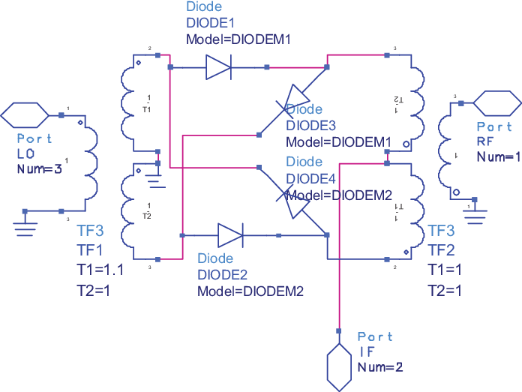
Figure 8: Diode-Ring Double Balanced Mixer
Insights into Diode-Ring Double Balanced Mixers
Modifying the design of a traditional diode-ring double balanced mixer—such as adding more diodes or adjusting the transformers—has a significant impact on its frequency response and overall performance. Transformer windings play a key role in determining the mixer's performance at lower frequencies, while the diode capacitance becomes serious at higher frequencies.
These design changes allow for precise tuning of the mixer to meet specific operational requirements. By carefully selecting and adjusting the number of diodes and optimizing the transformer characteristics, engineers can enhance the mixer’s performance across a wide frequency range. This level of customization ensures that the mixer can handle the complex demands of modern RF systems, providing accurate frequency conversion while preserving signal integrity in a variety of conditions.
Fine-tuning the components to fit the application's frequency range and performance needs is required to achieve the best results. This careful balancing of diode and transformer characteristics ensures that the mixer operates effectively in demanding RF environments, delivering both precision and reliability.
Applications of Double Balanced Mixers
Double-balanced mixers play a dynamic role in high-performance RF systems due to their ability to suppress unwanted signals and preserve signal integrity. Their high linearity makes them requisite in advanced communication and signal processing equipment, where precision is serious.
Building these mixers requires expert development and precise manufacturing techniques. Specialists carefully select high-quality components and ensure that the assembly is meticulous, as any deviation can affect the mixer's performance. This attention to detail is required to meet the demanding requirements of modern RF applications, ensuring the mixers operate efficiently across a wide range of conditions.
The skill involved in designing and manufacturing these mixers is directly tied to their reliability. When properly crafted, double-balanced mixers offer exceptional performance, making them a cornerstone in needed communications infrastructure, where signal accuracy and consistency are non-negotiable.
Conclusion
The continual refinement of double-balanced mixers, driven by advancements in component technology and system design, is used to keep pace with the escalating demands of RF communication systems. Their ability to suppress spurious signals and maintain high linearity underpins their seriousness in high-stakes applications, ranging from telecommunications to sophisticated radar systems. As RF technologies evolve, the ongoing innovation and application-specific customization of double-balanced mixers will remain dominant in achieving the high performance and reliability that modern RF applications demand. This makes them not just components but cornerstones of contemporary communication and signal processing equipment, where every decibel of performance can be the difference between clarity and confusion.
Frequently Asked Questions [FAQ]
1. What are the advantages of double balanced mixer?
A double-balanced mixer is preferred in RF applications due to its ability to provide excellent isolation between its ports—input, output, and local oscillator (LO). This isolation helps minimize the leakage of the LO signal into the output, which is used for maintaining signal integrity and preventing interference in the system. Another advantage is its suppression of spurious responses, including the suppression of the RF and LO frequencies at the output, which enhances the overall performance in complex signal environments. Practically, this means that in operations like signal conversion in communication systems, the mixer enhances signal clarity and quality, handling higher signal levels without distortion.
2. What is the difference between single and double-balanced mixers?
The primary difference lies in how each mixer handles signals and isolates different circuit parts. A single balanced mixer provides isolation between the LO and the RF input by balancing only one of these signals, typically using a single transformer or balun. This setup reduces some of the mixing products but not as effectively as a double balanced mixer. On the other hand, a double balanced mixer uses two transformers or baluns to balance both the RF and LO signals, offering better port isolation and suppression of unwanted mixing products. This means that in practical applications, double-balanced mixers are more effective in environments where signal purity and isolation are serious, such as in radar systems or advanced communication receivers.
3. What is the principle of frequency mixer?
A frequency mixer operates on the principle of converting frequencies by mixing two signals: the input signal (RF) and a locally generated signal (LO). The mixer multiplies these signals together, resulting in the sum and difference of the original frequencies being present in the output. This principle is known as frequency translation. In practice, mixers are used to shift signals to different frequency bands, either upconverting or down converting depending on the application. For example, in a receiver, the mixer down-converts the high-frequency incoming signal to a lower intermediate frequency (IF) for easier processing.
4. What is the function of the RF mixer?
The primary function of an RF mixer is to change the frequency of an RF signal to another frequency, a process suitable for signal processing in communication and radar systems. This allows for the adaptation of the signal to different stages within a system, facilitating easier signal processing and analysis. For instance, in receivers, mixers are used to convert high-frequency signals from an antenna to a lower frequency that is more manageable for filtering and amplification.
5. What is the function of an RF switch?
An RF switch is used to route signals between different paths in an RF circuit, enabling the selection of different signal paths within a system. This functionality is used in systems that require multiplexing between different components, like switching between different antennas or signal paths in a multi-band communication system. Practically, an RF switch allows for dynamic changes in the signal path configuration, supporting multiple operations and applications without the need for manual reconfiguration, which enhances operational efficiency and system versatility.
About us
ALLELCO LIMITED
Read more
Quick inquiry
Please send an inquiry, we will respond immediately.

Understanding Induction Coil Technology in Electronic Engineering
on September 11th
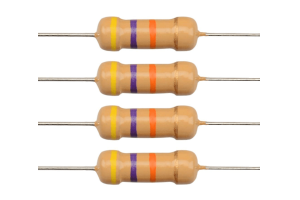
47k Ohm Resistor: Color Codes and Applications
on September 10th
Popular Posts
-

What is GND in the circuit?
on January 1th 3033
-

RJ-45 Connector Guide: RJ-45 Connector Color Codes, Wiring Schemes, R-J45 Applications, RJ-45 Datasheets
on January 1th 2603
-

Fiber Connector Types: SC Vs LC And LC Vs MTP
on January 1th 2160
-

Understanding Power Supply Voltages in Electronics VCC, VDD, VEE, VSS, and GND
on November 12th 2045
-

Comparison Between DB9 and RS232
on January 1th 1786
-

What Is An LR44 Battery?
Electricity, that ubiquitous force, quietly permeates every aspect of our daily lives, from trivial gadgets to life-threatening medical equipment, it plays a silent role. However, truly grasping this energy, especially how to store and efficiently output it, is no easy task. It is against this background that this article will focus on a type of coin cell battery that may seem insignificant on the...on January 1th 1750
-

Understanding the Fundamentals:Inductance Resistance, andCapacitance
In the intricate dance of electrical engineering, a trio of fundamental elements takes center stage: inductance, resistance, and capacitance. Each bears unique traits that dictate the dynamic rhythms of electronic circuits. Here, we embark on a journey to decipher the complexities of these components, to uncover their distinct roles and practical uses within the vast electrical orchestra. Inductan...on January 1th 1704
-

CR2430 Battery Comprehensive Guide: Specifications, Applications and Comparison to CR2032 Batteries
What is CR2430 battery ?Benefits of CR2430 BatteriesNormCR2430 Battery ApplicationsCR2430 EquivalentCR2430 VS CR2032Battery CR2430 SizeWhat to look for when buying the CR2430 and equivalentsData Sheet PDFFrequently Asked Questions Batteries are the heart of small electronic devices. Among the many types available, coin cells play a crucial role, commonly found in calculators, remote controls, and ...on January 1th 1638
-

What Is RF and Why Do We Use It?
Radio Frequency (RF) technology is a key part of modern wireless communication, enabling data transmission over long distances without physical connections. This article delves into the basics of RF, explaining how electromagnetic radiation (EMR) makes RF communication possible. We will explore the principles of EMR, the creation and control of RF signals, and their wide-ranging uses. The article ...on January 1th 1616
-

Comprehensive guide to hFE in transistors
Transistors are crucial components in modern electronic devices, enabling signal amplification and control. This article delves into the knowledge surrounding hFE, including how to select a transistor's hFE value, how to find hFE, and the gain of different types of transistors. Through our exploration of hFE, we gain a deeper understanding of how transistors work and their role in electronic circu...on November 12th 1556









